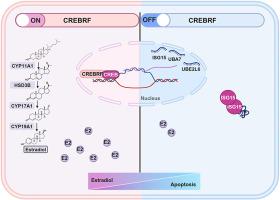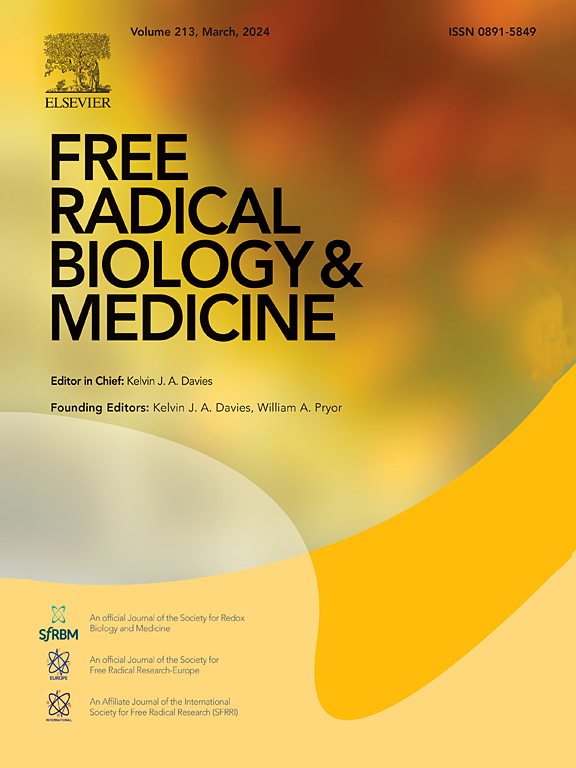CREBRF通过ISG15/ISGylation调节猪颗粒细胞的凋亡和雌二醇。
IF 7.1
2区 生物学
Q1 BIOCHEMISTRY & MOLECULAR BIOLOGY
引用次数: 0
摘要
颗粒细胞在雌性动物的生殖过程中起着至关重要的作用,因为它们的增殖、凋亡和激素分泌对卵泡发育和排卵至关重要。虽然 CREBRF 在生殖系统中的作用和机制已有部分报道,但其在卵巢颗粒细胞中的功能尚未得到充分探讨。本研究结果表明,出生后30天卵巢中CREBRF的表达量明显高于青春期和性成熟期。对 CREBRF 功能的研究发现,CREBRF 能促进猪颗粒细胞中雌二醇的合成,而对孕酮的合成没有影响。同时,CREBRF 可通过 Bax/caspase3/caspase9途径和调控 ISG15/ISGylation抑制猪颗粒细胞的凋亡。在这一过程中,颗粒细胞中许多基因的表达发生了变化。用 siRNA 敲除 CREBRF 后,一些促进细胞凋亡的基因(CMPK2、MX1、MX2、ZBP1、PML、CHAC1 和 BAX)的表达上调。ISG15-蛋白结合基因(HERC5、UBA7、UBE2L6、ISG15)的表达也上调。相反,抗凋亡基因(RFK、SNAP23)的表达则有所下降。总之,CREBRF 能促进猪颗粒细胞中雌二醇的合成,并起到抗凋亡的作用。这一发现为进一步阐明卵巢颗粒细胞的分子机制提供了新的见解,并有可能将 CREBRF 确定为提高繁殖力的分子靶标。本文章由计算机程序翻译,如有差异,请以英文原文为准。

CREBRF regulates apoptosis and estradiol via ISG15/ISGylation in pig granulosa cells
Granulosa cells play a crucial role in the reproductive processes of female animals, as their proliferation, apoptosis, and hormonal secretion are vital for follicular development and ovulation. Although the role and mechanisms of CREBRF in the reproductive system have been partly reported, its functions in ovarian granulosa cells have not been fully explored. In this study, the results indicated that the expression of CREBRF in the ovaries at 30 days after birth was significantly higher than that during puberty and sexual maturity. Studies on the function of CREBRF found that CREBRF could enhance the synthesis of estradiol and had no effect on progesterone synthesis in pig granulosa cells. At the same time, CREBRF could suppress apoptosis through the Bax/caspase3/caspase9 pathway and modulation of ISG15/ISGylation in pig granulosa cells. During this process, the expression of many genes changed in granulosa cells. Several genes (CMPK2, MX1, MX2, ZBP1, PML, CHAC1, and BAX) which were promoted apoptosis, were upregulated after CREBRF knockdown with siRNA. ISG15-protein conjugation genes (HERC5, UBA7, UBE2L6, ISG15) were also were upregulated. On the contrary, the expression of anti-apoptotic (RFK, SNAP23) genes decreased. In conclusion, CREBRF could enhance the synthesis of estradiol and acted as anti-apoptosis role in pig granulosa cells. This discovery can provide novel insights for further elucidating the molecular mechanisms of granulosa cells in the ovary and potentially identifies CREBRF as a molecular target for improving fertility.
求助全文
通过发布文献求助,成功后即可免费获取论文全文。
去求助
来源期刊

Free Radical Biology and Medicine
医学-内分泌学与代谢
CiteScore
14.00
自引率
4.10%
发文量
850
审稿时长
22 days
期刊介绍:
Free Radical Biology and Medicine is a leading journal in the field of redox biology, which is the study of the role of reactive oxygen species (ROS) and other oxidizing agents in biological systems. The journal serves as a premier forum for publishing innovative and groundbreaking research that explores the redox biology of health and disease, covering a wide range of topics and disciplines. Free Radical Biology and Medicine also commissions Special Issues that highlight recent advances in both basic and clinical research, with a particular emphasis on the mechanisms underlying altered metabolism and redox signaling. These Special Issues aim to provide a focused platform for the latest research in the field, fostering collaboration and knowledge exchange among researchers and clinicians.
 求助内容:
求助内容: 应助结果提醒方式:
应助结果提醒方式:


